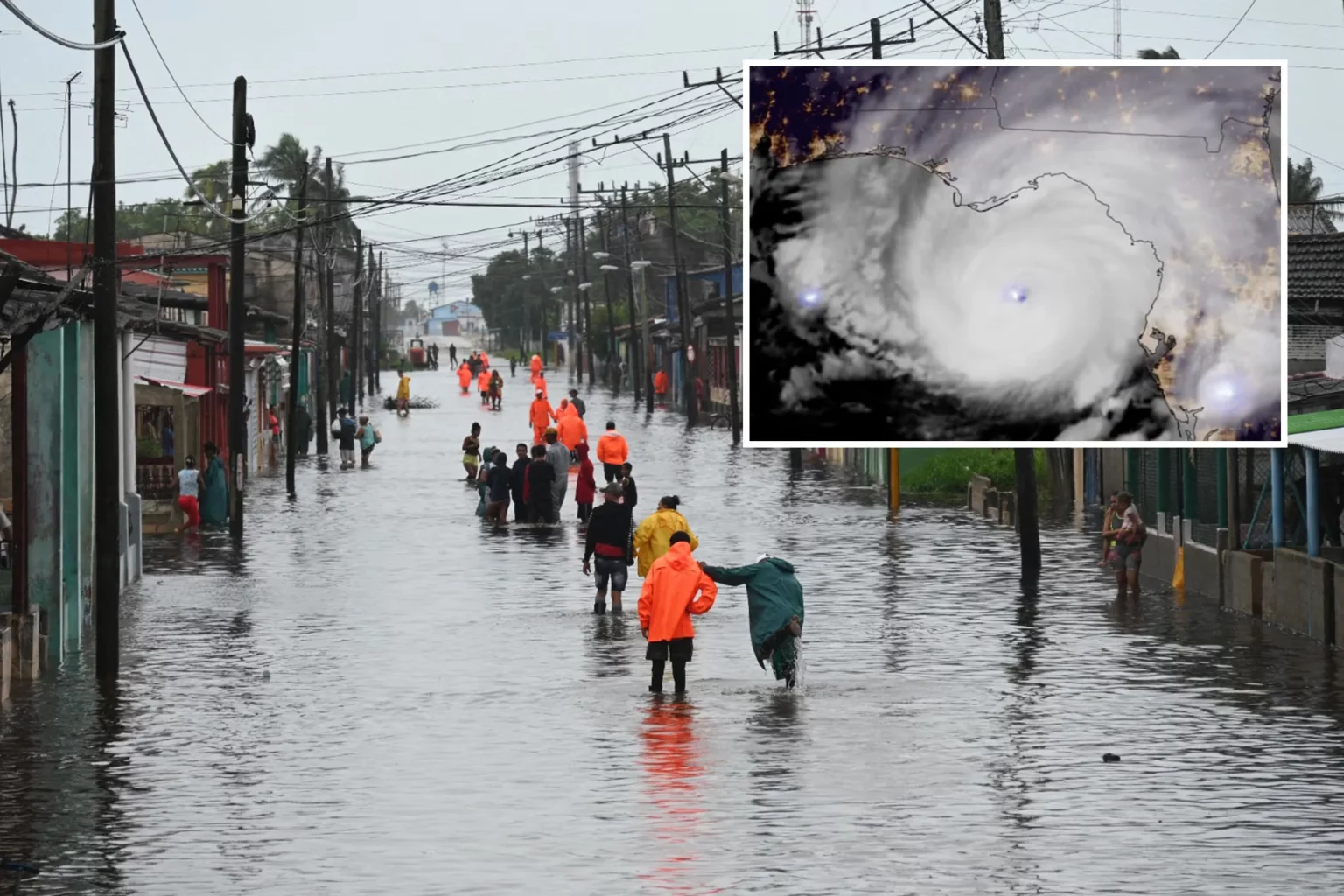Hurricane Idalia, an extremely dangerous Category 3 hurricane, has struck Florida’s northwest coast with unrelenting force. The storm’s impact has prompted dire warnings of potential catastrophe, including the ominous possibility of storm surges reaching an astonishing 16 feet (nearly five meters), setting off a wave of emergency measures and evacuations.
Florida authorities have described Hurricane Idalia as an unprecedented threat to the state’s northwest coast, with its life-threatening surges posing a dire once-in-a-lifetime event. In response, mass evacuations have been initiated, and flood alerts issued, as Florida braces for the immense impact.
As the clock neared 7:45 am (1145 GMT), Hurricane Idalia’s rampage culminated in its landfall within the marshy expanse of Florida’s Big Bend area. Packing maximum sustained winds of approximately 125 miles per hour (215 kilometers per hour), this tempest bore down on a region that lacks the protective buffer of barrier islands.
Governor DeSantis delivered a solemn message to residents, urging them to take the storm’s power seriously and remain hunkered down until the worst had passed. The loss of electricity affected over 140,000 Florida customers by 8:00 am, adding to the severity of the situation.
The US National Hurricane Center (NHC) issued an alarming bulletin, alerting the nation to the “extremely dangerous Category 3 Hurricane Idalia” as it landed on the Florida Big Bend. Of particular concern was the potential for a devastating storm surge ranging from 12 to 16 feet in select coastal areas.
While the hurricane’s intensity is anticipated to diminish post-landfall, experts predict that Hurricane Idalia will likely retain hurricane strength as it moves across southern Georgia and potentially brushes the coasts of Georgia or southern South Carolina.
Authorities underscored the gravity of the situation, emphasizing the potential for life-threatening storm surges. Federal Emergency Management Agency (FEMA) chief Deanne Criswell stressed that surviving a major storm surge’s path is improbable, urging citizens to prioritize their safety.
Residents of Florida’s Gulf Coast, including major urban centers like Tampa and Saint Petersburg, were specifically advised about the imminent danger of storm surges. With evacuation time having run out, officials have urged individuals to find shelter where they are.
Amid the hurricane’s approach, airports and ports have shuttered operations, while concerns loom regarding a rare blue supermoon coinciding with Hurricane Idalia’s assault, a conjunction that could further exacerbate tidal levels.
Notably, last year’s Category 4 Hurricane Ian claimed nearly 150 lives when it pounded Florida’s west coast with formidable ocean surges and relentless winds. Hurricane Idalia’s impact is projected to be accompanied by heavy rainfall, with expected accumulations of up to 12 inches in parts of Florida, Georgia, and South Carolina.
As the nation grapples with the concurrent onslaught of Hurricane Franklin in the Atlantic, the intensification of Hurricane Idalia has been attributed to a marine heatwave brewing in the Gulf of Mexico. This alarming phenomenon underscores the ever-growing potency of storms in an evolving world shaped by climate change.
As the immediate aftermath of Hurricane Idalia unfolds, Florida and the entire southeastern region remain on high alert, hoping for a swift recovery and minimal loss of life in the face of this monumental disaster.




